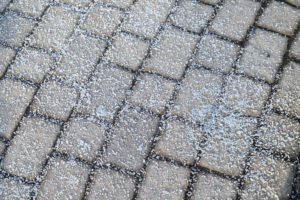Salt And Other Ice Melts On The Sidewalks Can Actually Hurt Your Lawn
If your property is close to a circulated road, you can expect your lawn and plants in the yard to be affected by the salt used to melt the ice and snow on the road, in the cold season. The salt reaches the grass, leaves and even roots of the trees because of the water and snow splashed around by vehicles circulating on the road. This water is absorbed by the vegetation in your yard, and the consequence can be the slowing of the growth process or even the death of some plants. Products like Revive offer great organic materials that will only benefit your lawn and plants and give them the nutrients needed to repair.
Damage identification
Typical signs of the damage caused by road salt are brown colored leaf extremities, especially in those situated close to the ground. However, signs are not always the same; some leaves may also simply turn yellow. Road salt acts as excessive fertilization: the plant gets too many nutrients and therefore it loses significant amounts of water from its structure.
Damage prevention
To prevent salt damage you can make a fence or other barrier to protect the vegetation in your yard. If salt contamination has already occurred, the only remedy is to irrigate the lawn abundantly. Additionally, you might want to consider planting less sensitive vegetation species.
Original Post here: Salt And Other Ice Melts On The Sidewalks Can Actually Hurt Your Lawn
Comments
Post a Comment